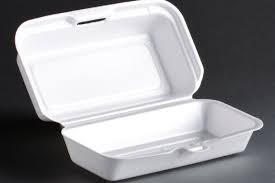
In recent years, there has been growing awareness of the environmental impact of single-use plastics, with particular attention focused on styrofoam, also known as expanded polystyrene (EPS). Despite its widespread use in food packaging and containers, styrofoam poses significant risks to human health and the environment.
This article explores the reasons why styrofoam should not be used for food packages and advocates for more sustainable alternatives.
First and foremost, styrofoam is derived from fossil fuels, making it a non-renewable resource with a high carbon footprint. The production process for styrofoam involves the use of petroleum, a finite resource that contributes to greenhouse gas emissions and climate change. By continuing to rely on styrofoam for food packaging, we perpetuate our dependence on fossil fuels and exacerbate environmental degradation.
Moreover, styrofoam is notorious for its persistence in the environment, taking hundreds to thousands of years to decompose. When styrofoam products are disposed of improperly, they accumulate in landfills, waterways, and oceans, where they break down into smaller pieces known as microplastics. These microplastics pose serious threats to marine life, birds, and other wildlife, which mistake them for food or become entangled in them, leading to injury, suffocation, and death.
Furthermore, styrofoam poses health risks to humans, especially when used for food packaging. Styrene, a chemical compound found in styrofoam, has been classified as a possible human carcinogen by the International Agency for Research on Cancer (IARC). When hot or acidic foods and beverages come into contact with styrofoam containers, styrene can leach into the food, potentially contaminating it and posing health risks to consumers. Additionally, styrofoam contains other harmful chemicals such as benzene and ethylene, which can migrate into food and pose health hazards.
The environmental and health hazards associated with styrofoam underscore the urgent need to transition to more sustainable alternatives for food packaging. Fortunately, there are numerous eco-friendly alternatives available that offer comparable or superior performance to styrofoam while minimizing environmental impact. These alternatives include paper-based packaging, compostable bioplastics, and reusable containers made from materials such as glass or stainless steel.
By replacing styrofoam with these sustainable alternatives, we can significantly reduce our reliance on fossil fuels, mitigate plastic pollution, and protect human health and the environment. However, transitioning away from styrofoam requires concerted efforts from policymakers, businesses, and consumers alike.
Governments can enact legislation to ban or restrict the use of styrofoam for food packaging and incentivize the adoption of eco-friendly alternatives. Similarly, businesses can embrace sustainable packaging practices and invest in innovation to develop and commercialize new packaging materials and technologies. As consumers, we can support companies that prioritize sustainability and choose products packaged in environmentally friendly materials.
In conclusion, the continued use of styrofoam for food packaging is unsustainable and poses significant risks to human health and the environment.
By phasing out styrofoam in favor of more sustainable alternatives, we can move towards a more circular and environmentally responsible approach to food packaging.
It would be recalled that recently , the Lagos State government as well as Oyo State , had banned the usage of styrofoams popularly known as [Take Away] after discovering its disadvantage to the health of Nigerians. It is only hoped that this development will sensitize the public not to use it especially at restaurants.


Government should put it into laws and regulations of the country to ban the use of it…